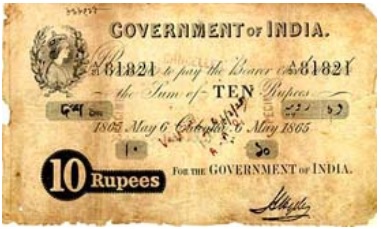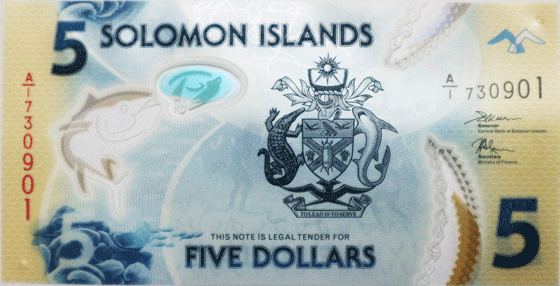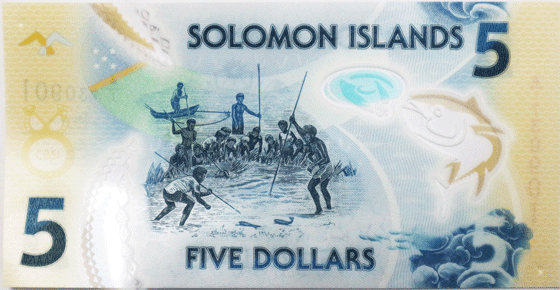
One hundred and sixty years after government paper currency was introduced in India in 1861, digital payments are leaping ahead, and Central Bank Digital Currency is round the corner. But, paper currency is here to stay. Notes in circulation will, in aggregate terms, soon cross Rs. 30 trillion and approach double the pre-demonetisation level.
Physical currency is recognised by the poor and rich, and in villages and metros. It is a country’s visiting card, which can capture the spirit of a nation, inspire and motivate, and enthuse a nation’s collective psyche and pride. Has India realised its full potential in this?
The 2020 award of the International Association of Currency Affairs for the best new currency feature was won by the strikingly beautiful five dollar bill of the Central Bank of Solomon Islands. The other finalists were from Australia, Bahamas, Europe, and Oman. Compared with other countries, including neighbours such as Bhutan, Nepal, and Maldives, Indian currency lags in capturing the country’s ethos, aspirations, and rich cultural heritage.


The most recent changes in Indian currency design, after demonetisation, were to its colour scheme and size. But, time for incremental changes is long past. A radical rethink from basic principles is required.
The first principle should address security. Strong security features enhance confidence in the currency. Apart from using distinct paper, and choosing from a host of cutting edge security features, such as hologram doorways, fluorescent images, perforated digits, rolling colour patches, shifting and reversing digits, and enhanced print quality, the Bank could develop customised features not available elsewhere. No expense should be spared in keeping note design ahead of forgers, adding latest technologies, and by altering, strengthening, or discarding compromised elements. The Reserve Bank of India spent Rs. 4378 crore on printing currency in 2019-20. It is worth spending much more for protecting currency integrity.
The second principle, also contributing to public confidence, is recognisability. It follows that some features from earlier series be retained. Recognisability is also related to accessibility to the visually challenged. Prolonged multi-channel publicity is key to achieving this objective.
A third principle is functionality, which requires an uncluttered currency. Clutter detracts from recognisability and the space available for security and other features. In India, every word or phrase has a multiplier effect on space as it requires translation into at least one other language.
The guarantee clause, stating that the notes are guaranteed by the central government, was introduced while transitioning from British government notes to those of a new and privately owned Reserve Bank of India. The Bank was since nationalised in 1949. It is also fast approaching its centenary. This clause has therefore long outlived its utility.
The promissory clause is a vestige of an era when currency was convertible into a base metal. Convertibility is now history, and we have a fiat currency. Many countries have dropped this clause. The Euro does not have one. The US dollar has a solemn declaration that “this note is legal tender for all debts, public and private.” A Reserve Bank proposal in the 1960s that both the clauses be dropped was not accepted. The Bank had to be content with dropping three phrases: “on demand,” “at any office of issue,” and “for the Reserve Bank of India.” (The Bank’s official history refers only to dropping the first of these.) The entire clause could now be dropped or replaced with a statement that “this note is legal tender for all debts in India”.
A third decluttering measure relates to languages. The government notes before the Reserve Bank of India was established had the denomination written in words and figures in the languages in use in British India. After independence, it was expressed in official languages in the Eighth Schedule of the Constitution. Of the 22 official languages, Konkani and Nepali were the last two to enter the currency. The last four official languages, Bodo, Dogri, Maithili, and Santhali, have not followed for space constraints. Given the limitations, all languages other than English and Hindi could be dropped and limited to microlettering. Alternatively, expression of denominations in words could be dropped as the public recognise notes by numbers and not words.
Related to the above is the bilingual signature of the Governor, in vogue since the LK Jha series of 1967. Signatures have no language. So, one of these could go. Globally, almost every currency is signed by one or two persons. The Euro does not carry a name or designation though signed by the President of the European Central Bank. The US dollar is jointly signed by two government officials, the Treasury Secretary and the Treasurer of the United States. The British pound was always signed by the Chief Cashier. The Reserve Bank (Note) Regulations 1935 require its note to be signed by an official authorised by the Central Board. The Hilton Young Commission had suggested that the Bank notes be signed by the Chief Cashier. How this came to be the Governor is a different story. The notes should ideally be signed by the official heading the currency function. This will help demystify the Governor’s position while enhancing the status of the Bank’s currency function.
Functionality also means having currency fit for ATMs and standard wallets. Less the need to fold notes, the longer their life. This leads to the fourth principle of durability. This requires that notes are resistant to tear, abrasion, crumpling, and soiling. A long pending innovation is that of polymer notes. If these can be made free of animal fat, with a lower carbon footprint than paper currency, given their longer life, polymer notes should be the way forward. In the meantime, experimenting with other materials should continue.
As a fifth principle, the currency should represent the country, capture the imagination of its people, celebrate its rich diversity, educate and inspire, and promote pride and confidence. Images of eminent persons, flora and fauna, and of inanimate objects are usually used.
Most countries have honoured different persons from various walks of life. Indian currency has so far had only Mahatma Gandhi on its design. With due respect to the father of the nation, and following other countries, we need to project a larger and diverse India. It is time to free Gandhi from Indian currency. Nobody would have welcomed it more than Gandhi himself.
The choice of persons to be honoured in Indian currency would have to be crowdsourced. My choice is Srinivasa Ramanujam, against the background of the neatly written equations in his lost notebook. Others could be Jamshetji Tata or Jagdish Chandra Bose. C.V. Raman or Homi Bhabha. Tagore or Premchand. Allauddin Khan or Zia Mohiuddin Dagar. Balasaraswati or Uday Shankar. Dhyan Chand or Satyajit Ray. Those who put India on the global map.
As for other images, we have featured all too familiar flora and fauna, monuments, and assorted industrial and agricultural activities. Why not go beyond conventional tropes, and jaded palettes, redolent of Planning Commission documents? The Great Indian Bustard or a Malabar Hornbill? A still from a Ray film? A Jaimini Roy or a Madhubani? The riot of colours in a Kathakali performance? The eleven Indian women in a Ravi Varma painting? In original colours. The possibilities are endless.
As miscellaneous principles, one rupee notes should be discontinued. Having both notes and coins of the same denomination drives out the more economical coin. Issuing limited number of notes encourages profiteering. Secondly, manufacture and distribution of notes similar to Indian currency, even for games, should be made a criminal offence.
Based on the above principles, note design should be contemporary and incorporate principles of universal design. An increasingly younger population should be able to identify with them. One such could be vertical notes with a portrait orientation, as in the Swiss franc or Argentinian peso. These make sense, as that is how one removes currency from the wallet. A second one could be the use of striking colour contrast as in Swiss Francs. Finally, removing the white frame around the notes make them stand out.
The practice of the government designing the note, and getting the Central Board of the Reserve Bank to recommend it for approval needs to end. Central bank currency should be the central bank’s responsibility from concept and design to delivery. While the government should be consulted, the Bank is better positioned to research and develop the best of currency designs interacting with other central banks, and global currency related organizations.
To paraphrase George Santayana, those who don’t remember or understand the history of the currency, are condemned to repeat the same old designs.
(An edited and much shorter version of this article was published in The Economic Times dated 8 May 2021.)
![]()